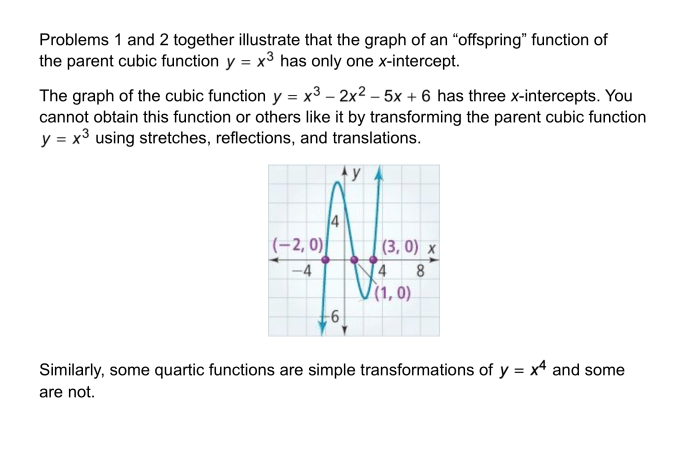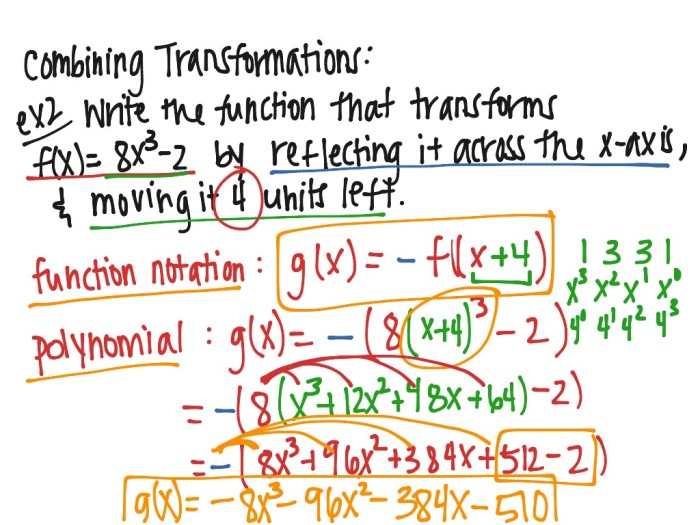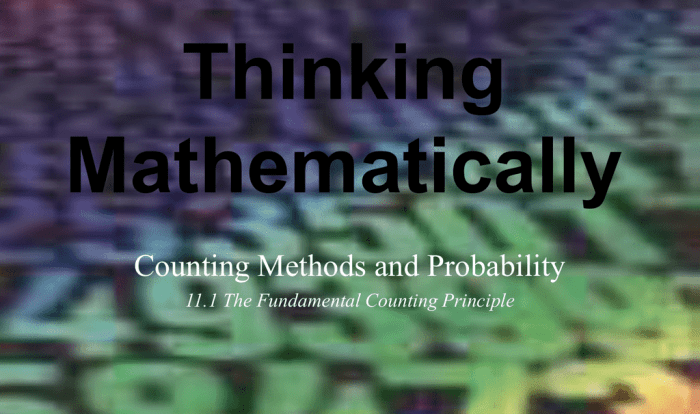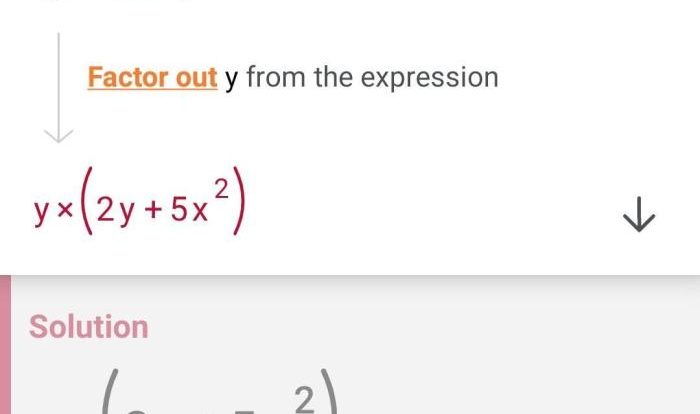Embark on an engaging journey through Transforming Polynomial Functions Quiz Part 1, where the intricacies of polynomial transformations unravel before your eyes. Delve into the fascinating world of polynomial functions, their diverse degrees, and the captivating relationship between their degrees and graphs.
Brace yourself for an illuminating exploration of transformations, including vertical shifts, horizontal shifts, reflections, and stretches/compressions, and witness their profound impact on polynomial function graphs. Prepare to master the art of analyzing polynomial function transformations, unraveling the steps to identify and describe applied transformations.
Discover the significance of these transformations in comprehending polynomial functions and their practical applications in fields like physics, engineering, and economics. Join us as we unlock the secrets of polynomial function transformations, empowering you with a deeper understanding of these mathematical marvels.
Polynomial Functions

Polynomial functions are mathematical expressions that represent the sum of a finite number of terms, each of which is a product of a coefficient and a variable raised to a non-negative integer power.
Polynomial functions can be represented in the general form:
f(x) = anx n+ a n-1x n-1+ … + a 1x + a 0
where a n, a n-1, …, a 1, a 0are real numbers and n is a non-negative integer.
The degree of a polynomial function is the highest power of the variable in the expression. For example, the polynomial function f(x) = 2x 3– 5x 2+ 3x – 1 is a third-degree polynomial function.
The graph of a polynomial function is a curve that can take on a variety of shapes, depending on the degree and coefficients of the polynomial.
Transformations of Polynomial Functions
Transformations of polynomial functions are operations that can be applied to a polynomial function to produce a new function with a different graph.
The most common types of transformations are:
- Vertical shifts: Moving the graph up or down by adding or subtracting a constant.
- Horizontal shifts: Moving the graph left or right by adding or subtracting a constant from the variable.
- Reflections: Flipping the graph over the x-axis or y-axis by multiplying the polynomial by -1.
- Stretches/compressions: Changing the width or height of the graph by multiplying the polynomial by a constant.
Each type of transformation has a specific effect on the graph of a polynomial function. For example, a vertical shift moves the graph up or down by the amount of the constant, while a horizontal shift moves the graph left or right by the amount of the constant.
Analyzing Polynomial Function Transformations
Analyzing polynomial function transformations involves identifying the type of transformation that has been applied to a given polynomial function and determining the effect of the transformation on the graph of the function.
To analyze a polynomial function transformation, follow these steps:
- Identify the original polynomial function.
- Determine the type of transformation that has been applied to the function.
- Apply the transformation to the original function to produce the new function.
- Graph the original function and the transformed function to see the effect of the transformation.
Analyzing polynomial function transformations is an important skill for understanding the behavior of polynomial functions and for solving problems involving polynomial functions.
Applications of Polynomial Function Transformations, Transforming polynomial functions quiz part 1
Polynomial function transformations have a wide range of applications in fields such as physics, engineering, and economics.
For example, in physics, polynomial function transformations can be used to model the motion of objects, while in engineering, they can be used to design bridges and other structures.
In economics, polynomial function transformations can be used to model the demand for goods and services.
Understanding polynomial function transformations is essential for solving problems in these and other fields.
Question & Answer Hub: Transforming Polynomial Functions Quiz Part 1
What is a polynomial function?
A polynomial function is a function that can be expressed as a sum of terms, where each term is a constant multiplied by a variable raised to a non-negative integer power.
What are the different types of polynomial function transformations?
The different types of polynomial function transformations include vertical shifts, horizontal shifts, reflections, and stretches/compressions.
How do I analyze a polynomial function transformation?
To analyze a polynomial function transformation, identify the original function and the transformation applied to it. Then, determine the effect of the transformation on the graph of the original function.
What are some real-world applications of polynomial function transformations?
Polynomial function transformations are used in various fields, including physics, engineering, and economics. For example, they are used to model projectile motion, design bridges, and predict economic growth.



